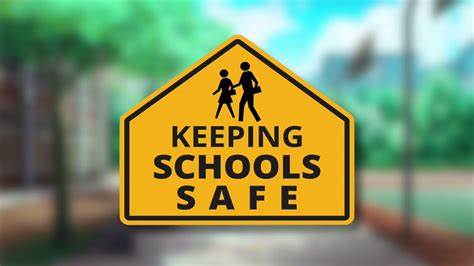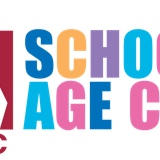Title Page
-
School conducted
-
Conducted on
-
Prepared by
-
Location
-
EMIS Number
-
School Management Team Member
-
Add signature
Level 1 - Prevention: Be Prepared
-
1.Our school has a safety officer and or a School Safety Committee.
-
2.Our school has a School Safety Policy.
-
3.Our Learner Code of Conduct was developed in consultation with learners and other members of the school community
-
4.The Learner Code of Conduct has been explained to and discussed with learners.
-
5.Our school has a Disciplinary Procedure.
-
6.Our school has Emergency procedures and displays them.
-
7.Access into and out of our school is controlled.
-
8.Our school has an early release procedure for learners.
-
9.Our school has security measures in line with the Regulations for Safety Measures at Public Schools.
-
10.Educators adhere to the South African Council of Educators Code of Conduct.
-
11.Educators have been trained on these policies and procedures.
-
12.Our school has been linked to a police station as part of the Partnership Protocol between the South African Polices Services and the Department of Basic Education
If you answered NO to QUESTION 1 then it is recommended that a school-based safety officer is appointed as prescribed in the Occupational Health and Safety Act (Act 85 of 1993). If you answered NO to ANY of the QUESTIONS FROM 2 TO 9 then it is recommended that you refer to the South African Schools Act (Act 84 of 1996) Regulations for Safety Measures at Public Schools and the Department of Education Schools Management Manual. If you answered NO to QUESTION 10 then refer to the South Africa Council for Educators Act (Act 31 of 2000). If you answered NO to QUESTION 11 then you have the policies and procedures in place, and need to focus on training educators on implementing the policy through training. Move to the next level to help guide you in your training needs. If you answered YES to all of these QUESTIONS then you are ready to move to Level 2!
Level 2- Responding: Take Action
-
13.Our educators know what to do if our policies are not followed (e.g. if rules are broken).
-
14.Our educators know what to do in an emergency (e.g. fire, bomb, disease, weather).
-
15. We know what to do if there are illegal drugs at school.
-
16. We know what to do if dangerous weapons are reported to us.
-
17. We know what to do if guns are on the school property.
-
18. We know what to do if theft, burglary or robberies occur.
-
19. We know how to deal with bullying, policy is implemented.
-
20. We know what to do after a traumatic event.
-
21. We consistently and fairly implement the agreed consequences when the Learner Code of Conduct is not adhered to.
-
22. We have a directory of services in our community that we can refer learners to.
Level 3- Creating a Safe Learning Environment : Take Care
-
23. We have a network of services that come to the school to support us, such as the police, social workers, and district support teams
-
24. We know who to contact at our nearest police station if we need their support.
-
25. We have established relationships with religious and faith-based community structures that we can call on to provide pastoral care
-
26. We refer troubled learners or learners in need to the appropriate services.
-
27. We implement the life orientation curriculum.
-
28. We encourage positive relationship building through demonstrating and encouraging appropriate behaviour.
Level 4- Early Warning System: Be Aware
-
29. We record serious safety incidents such as gang activity, drugs, thefts, use of weapons, or injuries.
-
30. We record incidents relating to interpersonal violence such as bullying, verbal abuse, physical violence and discrimination.
-
31. We are able to refer reported incidents to the School Level Support Team.
-
32. We are able to refer reported incidents to the District Level Support Team.
-
33. Educators and learners know how and where to report threats and safety incidents.
-
34. Educators know what to do if learners report incidents of threats to them.
-
35. We have established a confidential system for learners to report incidents.
-
36. We know what threatens the safety of our educators and learners and prevents our school from teaching and learning.
Elements of School Safety
-
1. School grounds are fenced and secured,
-
2. Gates are secured with secure padlocks and chains after hours.
-
3. Drug-free and dangerous weapon-free zone signs are posted.
-
4. Signs are posted for visitors to report to the main office through a designated entrance.
-
5. Shrubs and foliage are trimmed to allow for good line of sight.
-
6. All poisonous shrubs, trees, and foliage have been removed.
-
7. Bus /Taxi, private transporters loading and drop-off zones are clearly defined.
-
8. Access to bus loading area by other vehicles is restricted to loading/unloading.
-
9. Staff members are assigned to bus loading/drop-off areas.
-
10. Good visual surveillance of play equipment and areas is possible.
-
11. Vehicle access to play areas is restricted.
-
12. Playground equipment has been secured. All play equipment is safe to use by children
-
13. Visual surveillance of parking lots from the main office.
-
14. All areas of school buildings and grounds are accessible to patrolling security vehicles.
-
15. Learner access to parking areas is restricted to arrival and dismissal times.
-
16. A staff parking procedure is in place, with licence plates on file.
-
17. There are no broken window panes.
-
18. There is burglar proofing at all windows in the administration block.
-
19. Doors must be locked when classrooms are vacant.
-
20. There is a central alarm system in the school.
-
21. High-risk areas (office, computer room, music room, workshops, laboratories, etc.) are protected by high security locks and an alarm system.
-
22. Unused areas of the school can be closed off during after-school activities.
-
23. If a classroom is vacant, pupils are restricted from entering the room alone.
-
24. Friends, relatives or non-custodial parents are required to have written permission to pick up a pupil from school
-
25. Pupils are required to have written permission to leave school during school hours.
-
26. There are written regulations regarding access and control by school personnel using the Buildings after school hours, i.e churches.
-
27. Staff are required to walk around inside and outside the facility to check that all doors are secure and all windows are closed.
-
28. Teachers are required to lock classrooms upon leaving after school., All classrooms can be locked?
-
29. A record of fire inspections by the local fire department is maintained.
-
30. All school staff are trained in the use of fire extinguishers and are provided with a map of each hall where extinguishers are located.
-
31. Random searches and seizures are conducted on a regular basis, also by SAPS or METRO
-
32. The entrance lobby is visible from the main office.
-
33. Multiple entries to the building are controlled and supervised.
-
34. Visitors are required to sign in.
-
35. There is only one clearly marked and designated entrance for visitors.
-
36. Proper identification is required of vendors, repairmen, etc.
-
37. Visitors are issued I.D. cards or badges, or access controls slips
-
38. The hallways are properly lit for safety.
-
39. Toilets are properly lit.
-
40. Appointed staff supervise toilets – gender specific.
-
41. The toilet walls are free of graffiti, vandalism
-
42. Doors accessing internal courtyards are securely locked.
-
43. Stairwells are properly lit. Lux Factor of 200
-
44. Exit signs are clearly visible and pointing in the correct direction.
-
45. Switches and controls are properly located and protected.
-
46. The possibility of lower energy consumption and high lighting levels with more efficient light sources has been explored.
-
47. Directional lights are aimed at the buildings.
-
48. Access to electrical panels is restricted. LOTO
-
49. Mechanical rooms / workshops and other hazardous storage areas are kept locked.
-
50. School files and records are maintained in locked, vandal-proof, fireproof containers or vaults
-
51. The school maintains a record of all maintenance on doors, windows, lockers, or other areas of school
-
Add signature











